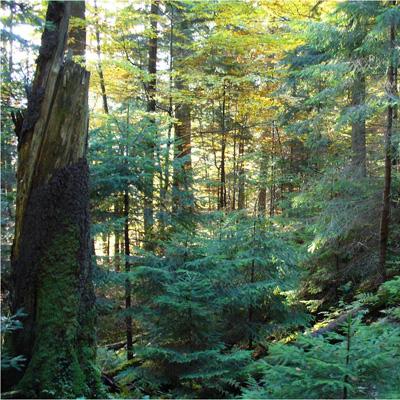Quantifying Carbon Dynamics and Sequestration under Alternate Forest Management Scenarios in the Northern Forest: Evaluation of Sequestration Options and Tradeoffs

Forest trees sequester, or store, carbon which reduces greenhouse gases in the atmosphere. Developing carbon markets recognize the potential contribution of sustainable forest management to climate change mitigation efforts. Yet, scientists debate the effect of different forest management practices on carbon storage. Some suggest that sustainably managed forests sequester more carbon than unmanaged forests and point to high tree growth rates achieved in harvested stands and carbon stored in wood products. Other studies demonstrate that unmanaged forests maintain older, larger trees that sequester greater amounts of carbon.
To address this dilemma facing forest managers, NSRC researchers investigated the impacts of harvest frequency and post-harvest retention (trees left after harvest) on carbon sequestration in northern hardwood-conifer forests. Researchers used the U.S. Forest Service's Forest Vegetation Simulator to project stand development over a 160-year period under 9 different management scenarios for 32 Forest Service Forest Inventory and Analysis (FIA) plots in upstate New York, Vermont, New Hampshire, and Maine. Simulated treatments represented a gradient of increasing tree retention and decreasing harvest frequency, including a "no management" scenario.
For active treatments, those favoring high levels of tree retention and decreased harvest frequency stored the greatest amounts of carbon. Even considering carbon stored in harvested wood products, unmanaged northern hardwood forests will sequester a minimum of 39% more carbon than the active management options. Shifting from high frequency management with low tree retention to low frequency management with high retention can sequester up to 57% more carbon. Many options are available for forest landowners to enhance carbon storage and participate in carbon markets.
Download printable version [PDF]
Download full final report [PDF]
